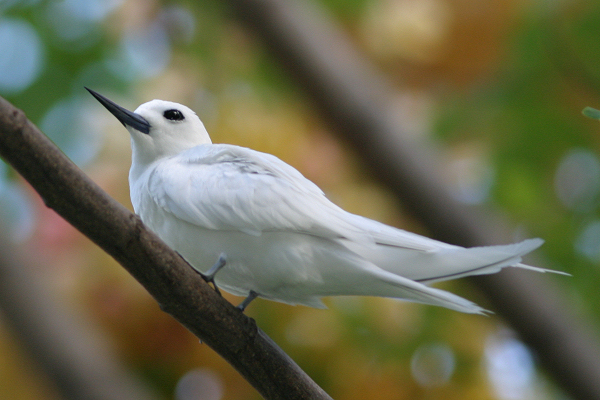Brown Tree Snakes are an arboreal species that prey on birds and small mammals in Guam. They are effective killing machines with nothing to hinder them and have now caused the extinction of 10 of 12 native bird species on Guam. While the BTS (Brown Tree Snake) has had a direct, destructive impact on birds of Guam, there are now indirect links that the BTS could be causing the transformation of forests on the island. Loss of species and the degradation of native tree species have been observed because of the correlated loss of seed dispersers.
 |
| Guam Flycatcher that is now extinct by the BTS. |
The BTS is an incredible predator; it is nocturnal, venomous, and constricting which leads to its ability to wipe out native species. The snake preys on lizards, amphibians, small mammals, birds, eggs and pretty much any other thing that moves. Because the snake is such a generalist feeder, this has allowed it to multiply and dominate the landscape so quickly. While the snake has its own physical advantages, it also takes another advantage through the natural history of its prey. These animals are not used to having such an apex predator in their homeland, and since the snake is an invasive they have not developed and type of defenses or defensive behavior to aid in their escape.
 |
| Threatened White Tern |
  |
Micronesian Kingfisher that has been extirpated from the island of Guam.
Threatened Fruit Bat
The birds of Guam have been wiped out because the snake's ability to hunt at night, and because it preys on the nests in trees. When mature adults are hunted, they then are not capable of reproducing, and those eggs that have been laid are also at the disadvantage of being eaten-this makes for an unpromising future. With the loss of birds comes a severe shift in an ecological system. Birds among other species, like the fruit bat, are seed dispersers and pollinators, and the role they play in an ecosystem is very important. Seed dispersers and pollinators allow plants and trees to reproduce and be fertilized. Without these key players we will start to see degraded and fragmented forests in Guam, which could lead to further complications in an already complex ecosystem.
|
 |
This graph represents the growth of the Brown Tree Snake vs. the declining populations of selected prey. It's based on a logarithmic scale. As you can see, the trend lines highlight very clearly that increased population of BTSs has wiped out some of the native avifauna of Guam.
|





This is a good start to this page. Maybe you could expand a little more on the threats this species poses and why it is so important. Since your title is about the birds as well maybe you could discuss that more here and the implications for the birds disappearing from the forests
ReplyDeleteAgree with Megan, just adding a little more about other species that it threatens would be really cool!
ReplyDeleteI vaguely remember a professor telling me once that the BTS extirpated the bird population in Guam because it had the ability to climb trees and eat bird eggs. Though I'm not entirely sure my memory (or my professor for that matter) are correct, I think an explanation on exactly how the BTS is driving bird numbers down could be useful on this page. That way, you could easily tie into your management tabs since you have a direct method of predation you can attempt to address in your management ideas.
ReplyDeleteYour figure is a bit hard to figure out. What is the Y axis. Log what?
ReplyDeleteSo I took log10 of the number of birds and snakes encountered within a given area.
ReplyDelete